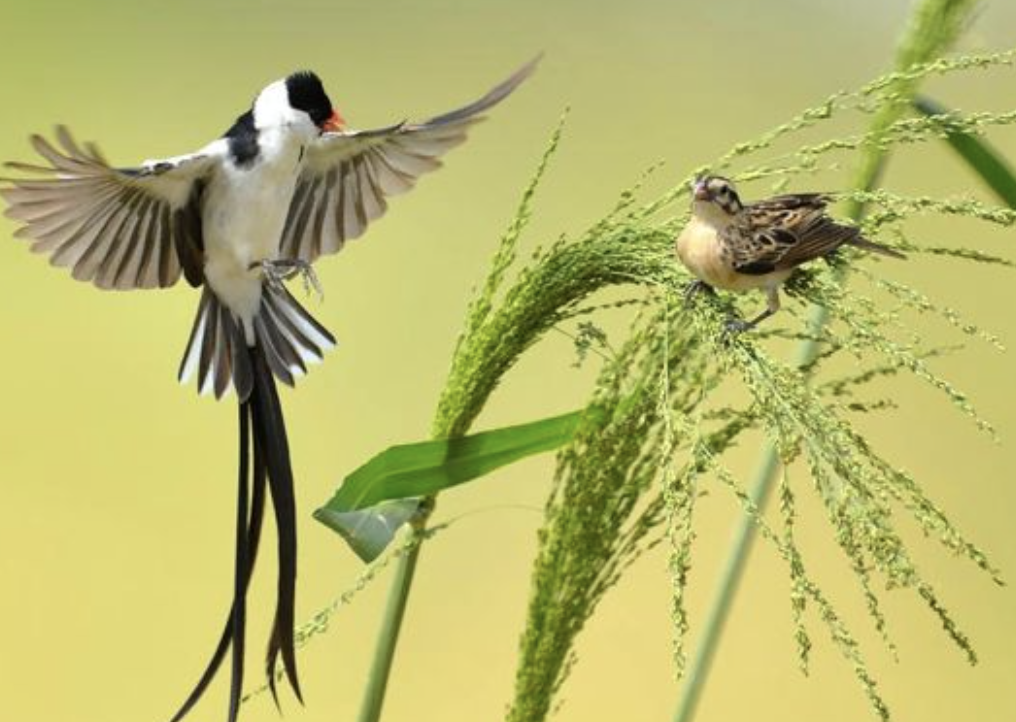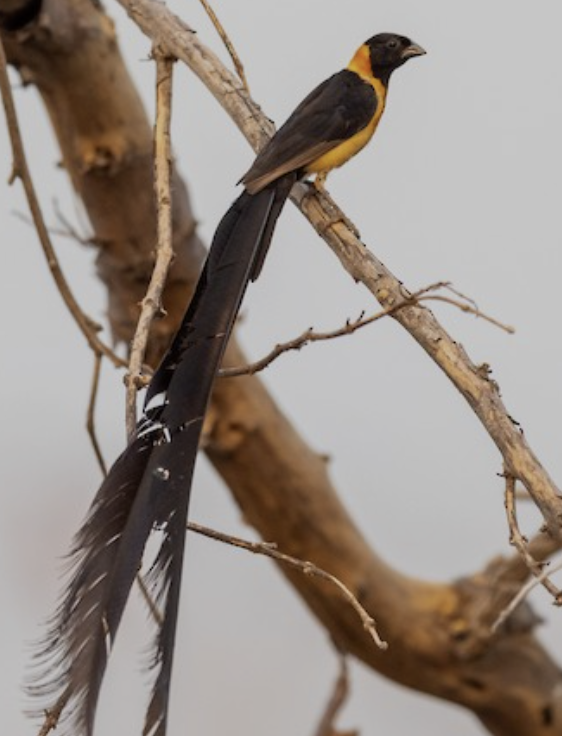
Series 4
OUTSOURCED PARENTING-BROOD PARASITISM IN BIRDS
INDIGOBIRDS AND WHYDAHS (VIDUIDAE FAMILY)
Indigobirds (Vidua spp.) and whydahs (Vidua spp.) are closely related finch-like brood parasites found mainly in sub-Saharan Africa. Unlike the bold cowbird or the stealthy cuckoo, these birds use song and social mimicry to infiltrate host nests and successfully pass off their young. Their parasitic strategy depends not just on timing and egg-laying but also on acoustic deception.

Key Parasitic Species
- Village indigobird (Vidua chalybeata) – One of the most widespread across Africa
- Pin-tailed whydah (Vidua macroura) – Common in open grasslands and towns
- Broad-tailed paradise whydah (Vidua obtusa) – Known for its long, flowing breeding tail
- Straw-tailed whydah (Vidua fischeri) – Parasitizes firefinches in East Africa
Hosts and Parasitism Style
All indigobirds and whydahs are host-specific parasites. Each species targets a particular host, usually from the Estrildidae family (waxbills and firefinches). Common host species include:
- Red-billed firefinch
- Jameson’s firefinch
- African silverbill
- Common waxbill
These hosts are all small, socially active seed-eaters that build dome-shaped nests.

The female indigobird or whydah lays eggs that look nearly identical to those of her host in size, color, and texture.

But it doesn’t end there. The real trick lies in what happens after the chick hatches.
Song Mimicry
Unlike cuckoos or cowbirds, indigobird and whydah chicks don’t eject the host’s eggs or chicks. Instead, they grow up alongside them, learning the vocal patterns of the host species, down to the pitch, rhythm, and trill. When they mature, male indigobirds mimic the song of their foster species to attract mates. This is because female indigobirds, when choosing a mate, prefer the song of the host species they were raised by. This creates a kind of cultural imprinting loop, where host-specific mimicry keeps species lines separate even though they look nearly identical.
Habitat and Distribution
Indigobirds and whydahs inhabit savannas, grasslands, agricultural fields, and villages across sub-Saharan Africa. They follow the distributions of their host species, and parasitism often increases during rainy seasons when hosts are breeding.

The pin-tailed whydah, with its striking long tail, is one of the few brood parasites that has successfully adapted to urban environments. It’s now even seen in cities, gardens, and suburban areas across East and Southern Africa.

Feeding and Diet
These birds feed mostly on grass seeds, millet, and small grains. Because their hosts are seed eaters, they grow up on a similar diet, and there’s little conflict between parasite and host chick in terms of food preferences.

Adults forage in small flocks or alone, especially outside the breeding season. During the breeding season, males become territorial and aggressive toward rivals.
Mating and Breeding Behavior
Male indigobirds and whydahs are flamboyant during the breeding season:
- They perform aerial displays with rapid wingbeats and high-pitched calls.

- Males establish and defend territories close to host nests.
- Their song is a mixture of host mimicry and personal additions, which they use to lure females.
Females, once mated, find active host nests and lay their eggs stealthily. Most species lay one egg per nest, visiting several nests throughout the season. They don’t destroy host eggs, and sometimes even synchronize their egg-laying with the host’s cycle to match hatching times.

Group Behavior and Social Life
Unlike solitary cuckoos, indigobirds and whydahs are more gregarious:
- They often forage and migrate in small groups.
- Males hold separate singing territories but will roost communally at night.
- Outside breeding season, they may mix with other finch species in large seed-eating flocks.
Migration and Movements
These birds are generally sedentary or nomadic, moving locally with the rains. Their hosts also follow rainfall patterns, which determine when and where nesting occurs. Some species, like the pin-tailed whydah, have shown range expansion due to human activity and climate shifts, spreading into new regions and parasitizing new host populations.

Scientific Wonders and Challenges
- Because of the cultural mimicry system, indigobird species can potentially speciate without genetic isolation, just by choosing a different host and singing its song. This form of evolution is cultural speciation.
- This also makes it very hard for scientists to tell one species from another—they look almost identical but differ in song and host choice.
Conclusion in the form of a human Analogy
Think of it like a child who grows up speaking the neighbor’s language and then uses that same language to find a partner and start a family of their own, completely bypassing their parents’ culture, rules, and house. Then their children do the same. It’s the musical version of identity theft and works surprisingly well.




